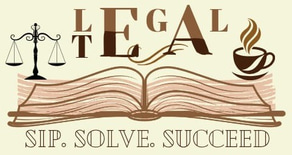The Constructive Notice Doctrine: Protecting Companies Or Trapping Outsiders?
Since company documents, such the Memorandum and Articles of Association, are accessible through official registers, the Doctrine of Constructive Notice in company law assumes that everybody interacting with a company is aware of them. This theory raises questions regarding fairness to third parties, particularly those without legal understanding or resources, even if it seeks to protect businesses against unlawful or extra vires transactions by promoting due diligence.
Aakhya Singh, 3rd year B.A., LLB
4/24/20254 min read


This blog critically analyzes the doctrine's dual character, determining whether it acts as a legal trap for unwary outsiders or as a valid safeguard for businesses. It also examines the Doctrine of Indoor Management's counterbalancing function and the applicability of constructive notice in contemporary business operations.[1]
But other people, particularly those who lack legal expertise or the resources to understand complicated legal documents, are frequently unfairly burdened by this presumption. In the context of contemporary business practices, when transactions are swift and frequently involve numerous stakeholders, critics contend that the idea is out of date. Furthermore, it is frequently impractical to assume that all third parties have viewed and comprehended the company's public documentation. [2]
This blog examines the Doctrine of Constructive Notice's history, justification, and applications. It also looks at the opposing but complimentary Doctrine of Indoor Management, which aims to protect outsiders acting in good faith in order to lessen the severity of constructive notice. The blog challenges whether the doctrine still fulfills its original intent or if it acts as a legal trap that businesses can take advantage of through case law and critical analysis. The ultimate goal of the conversation is to assess whether reform is required to strike a balance between legal clarity and fairness in business transactions.[3]
A legal principle known as the Doctrine of Constructive Notice assumes that anybody interacting with a business is aware of its publicly available documents, such as the Memorandum and Articles of Association.
By imposing an obligation of attention to detail imposing an obligation of attention to detail on third parties to examine these publicly available records prior to conducting business, this principle mainly safeguards corporations. Some contend it can also trap outsiders who may not have properly seen the legal documents, even if its goal is to shield businesses from being unjustly burdened by contracts they did not intentionally commit to.[1]
Companies are shielded from being bound by agreements that conflict with their public records under the constructive notice doctrine. It guarantees that businesses won't be held accountable for internal inconsistencies or acts that weren't permitted by its constitution. The Memorandum of Association (MOA) and the Articles of Association (AOA), which set forth the goals, authority, and internal rules of the business, are the two main documents that are covered by constructive notice. These documents are available for public scrutiny and are filed openly. 6
Even if they haven't read the MOA and AOA in print, the doctrine assumes that anybody interacting with the business is aware of their contents. This assumption stems from the fact that these documents are easily accessible and that people are expected to do their research before signing contracts with the business. Since they are assumed to have been aware of the business's constitution, an outsider cannot enforce a contract they engage into against the corporation if it conflicts with the MOA or AOA. This safeguard aids businesses in avoiding circumstances in which they might be unjustly bound by unapproved contracts. The idea may be unjust to outsiders who may not have actually read the MOA and AOA, according to critics. They contend that anybody who might have relied on the company's internal processes or representations - even if those processes were later shown to be at odds with the publicly available documents - can be caught in the presumption of awareness.[2]
English business law from the 19th century is where the Doctrine of Constructive Notice originated, especially as a result of the Industrial Revolution's increased focus on corporate regulation and legal formality. Determining the parameters within which businesses might function and safeguarding them against unapproved actions by agents or directors became necessary as the number of companies rose and their organizational structures became more intricate. In order to accomplish this, the law mandated that the Memorandum and Articles of Association, two important papers, be submitted with the Registrar of Companies and made available to the public. The theory developed into a legal fiction, presuming that anybody interacting with a business had read and comprehended these documents, whether or not they had.[1]
The Ervine v. West End Bowling Club (1878) case and other rulings that supported the notion that corporate constitutional documents were binding on both company members and outside parties involved in business dealings are among the first and most significant references to this doctrine.[2] The theory was eventually criticized for being unduly strict and unjust to outsiders who couldn't possibly be expected to look over every company's records. In the famous case of Royal British Bank v. Turquand (1856), this resulted in the creation of the Doctrine of Indoor Management, a counter-rule that protected third parties operating in good faith and lessened the severity of constructive notice.[3]
In the final analysis, a legal principle known as the Doctrine of Constructive Notice seeks to safeguard businesses by making sure that other parties are aware of their publicly available documents prior to conducting business. One could argue that it unfairly traps outsiders who may not have actually looked at the documents, even if it can be helpful in keeping businesses from being bound by unapproved agreements. The indoor management doctrine, which safeguards outsiders acting in good faith, frequently serves as a counterbalance to the doctrine.
[1] Hannigan, B., 2018. Company Law. 5th ed. Oxford: Oxford University Press.
[2] Davies, P.L. and Worthington, S., 2016. Gower’s Principles of Modern Company Law. 10th ed. London: Sweet & Maxwell.
[3] Kershaw, D., 2012. Company Law in Context: Text and Materials. 2nd ed. Oxford: Oxford University Press.
[4] .Hicks, A. and Goo, S.H., 2011. Cases and Materials on Company Law. 7th ed. Oxford: Oxford University Press.
[5] Ministry of Corporate Affairs (India), 2013. Companies Act 2013. [online] Available at:
https://www.mca.gov.in/content/mca/global/en/home.html [Accessed 14 Apr. 2025]. 6 Ramaiya, A., 2018. Guide to the Companies Act. 18th ed. Gurgaon: LexisNexis.
[6] Palmer, F.B., 1909. Company Law: A Practical Handbook for Lawyers and Businessmen. 6th ed. London: Stevens & Sons.
[7] Mayson, S., French, D. and Ryan, C., 2022. Mayson, French & Ryan on Company Law. 38th ed. Oxford:
Oxford University Press.
[8] Ervine v. West End Bowling Club (1878) 4 App Cas 828.
[9] Royal British Bank v. Turquand (1856) 6 E&B 327; 119 ER 886.
Because Every Legal Mind Deserves a Great Conversation.
Legaltea.in@gmail.com
+91 6284295492
MSME Certified
© 2025 Legal Tea. All rights reserved.


